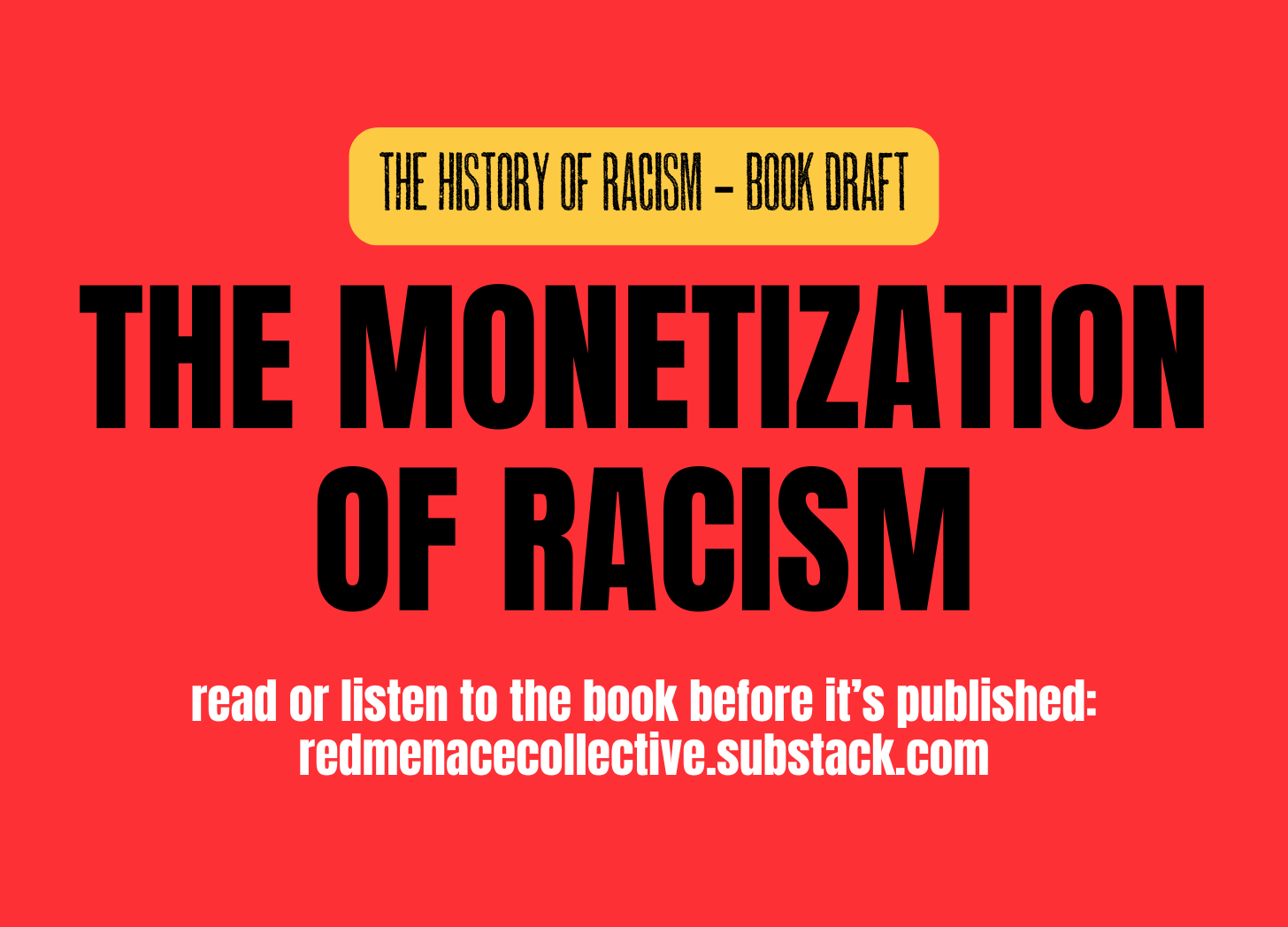The Monetization of Racism
A little side project exploring the origin and evolution of the term "racism" from inception to modern day.
Dive into the origins and evolution of one of the most charged words in history—racism. This side project explores how the term was born, its transformation through ideological and political struggles, and its journey from a concept critiquing oppression to a weapon in modern-day cultural battles, unpacking how "racism" became a driver for leftist ideologies and societal shifts. It's a bold, unapologetic look at the word that reshaped public discourse, from inception to now.
This project will become a short book when it’s done.
Subscribers to The Red Menace Collective will receive a free digital copy of the book and be able to follow along with draft chapters as the book is written.
This is the seven chapter in the book, which looks at the DEI explosion between 2010-2019, leading up to the BLM riots.
The Monetization of Racism
Between 2011 and 2019, both the definition and understanding of racism underwent a fundamental transformation, as anti-racism evolved from a grassroots moral stance into a lucrative industry.
The Evolution of Academic Definitions
The early 2010s marked a crucial shift in how scholars defined and analyzed racism, increasingly emphasized structural and systemic aspects. Eduardo Bonilla-Silva, a Latino sociologist at Duke University, captured this transition in his 2013 work "Racism without Racists":
"The main problem nowadays is not the folks with the hoods, but the folks dressed in suits."
Bonilla-Silva's definition positioned racism as:
"A structure, that is, it is a network of social relations at social, political, economic, and ideological levels that shapes the life chances of the various races."
This structural understanding was reinforced by Michelle Alexander, a Black civil rights lawyer and legal scholar, in her 2010 work "The New Jim Crow." Alexander demonstrated how racism operated through seemingly race-neutral systems, particularly in criminal justice:
"We have not ended racial caste in America; we have merely redesigned it."
The field of critical whiteness studies contributed significantly to this evolving definition. Zeus Leonardo, a Filipino-American professor of education at UC Berkeley, argued in his 2013 "Race Frameworks":
"Whiteness is not a culture but a social concept and racial discourse, whereas white people represent a socially constructed identity, usually based on skin color."
William A. Darity Jr., a Black economist at Duke University, expanded the definition through an economic framework in 2018:
"Racism is fundamentally a material and economic system of exclusion and exploitation that generates racial inequality in health, wealth, and opportunity."
This economic lens helped bridge traditional civil rights concerns with broader critiques of capitalism and wealth inequality.
In the health sciences, David R. Williams, a Black public health scholar at Harvard, and Selina A. Mohammed, an Asian-American nursing professor, provided a comprehensive definition in their 2013 work "Racism and Health" that highlighted the systemic nature of racial inequality:
"An organized social system in which the dominant racial group, based on an ideology of inferiority, categorizes and ranks people into social groups called 'races' and devalues, disempowers, and differentially allocates desirable societal opportunities and resources to racial groups regarded as inferior."
This medical perspective helped demonstrate how racism's effects extended far beyond conscious bias into measurable health outcomes.
Patricia Hill Collins, a Black feminist sociologist at the University of Maryland, emphasized in her 2015 work the interconnected nature of various forms of oppression:
"Racism is not simply a system of prejudice or individual bias, but a complex system of power that shapes opportunity, access, and how people understand themselves and others."
This intersectional framework became increasingly central to both academic and popular understanding of racism. As these scholarly definitions gained traction in academia, they began to influence public discourse through multiple channels: corporate diversity training, social media activism, and popular anti-racist literature. The evolution from individual to systemic definitions of racism created new opportunities for both genuine reform efforts and commercial exploitation.
Between 2011 and 2019, anti-racism evolved from a grassroots moral stance into a lucrative industry. No longer simply an ideological battle, it became a multi-billion-dollar market where guilt, corporate compliance, and performative virtue signaled success. The new anti-racism wasn't just about addressing discrimination—it was about selling it.
Continue below the paywall to access the full chapter.
Keep reading with a 7-day free trial
Subscribe to The Red Menace Collective to keep reading this post and get 7 days of free access to the full post archives.





